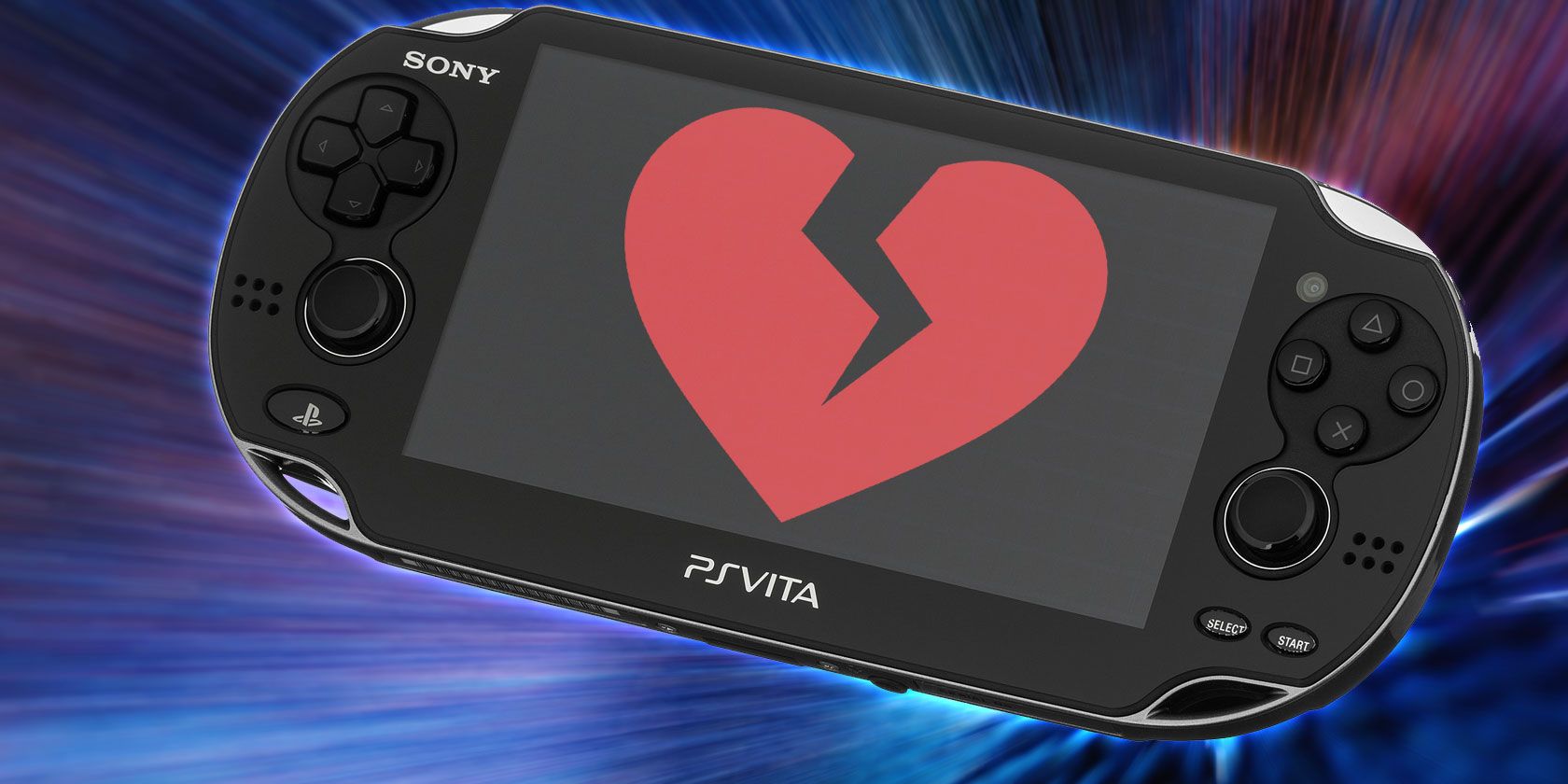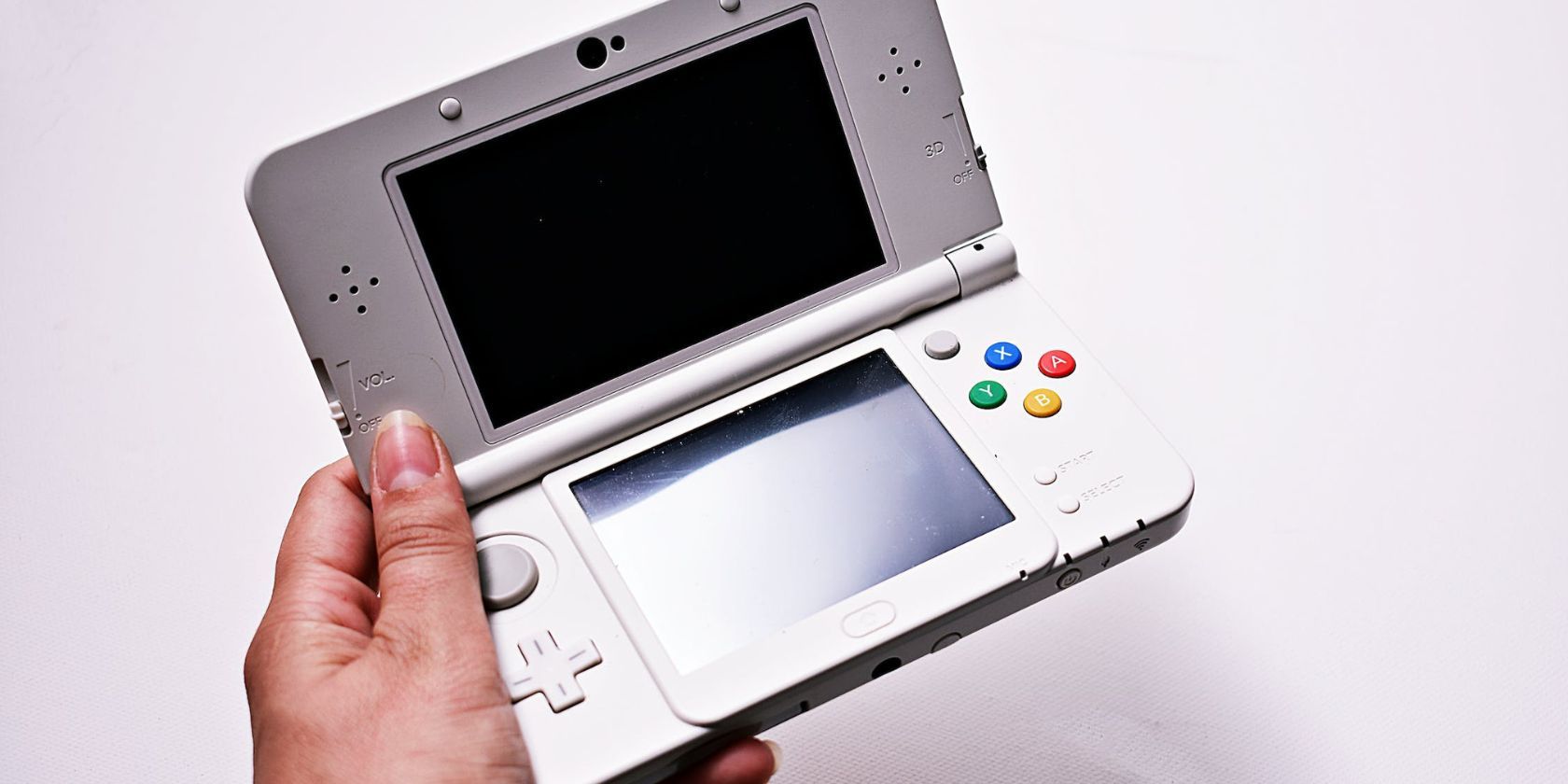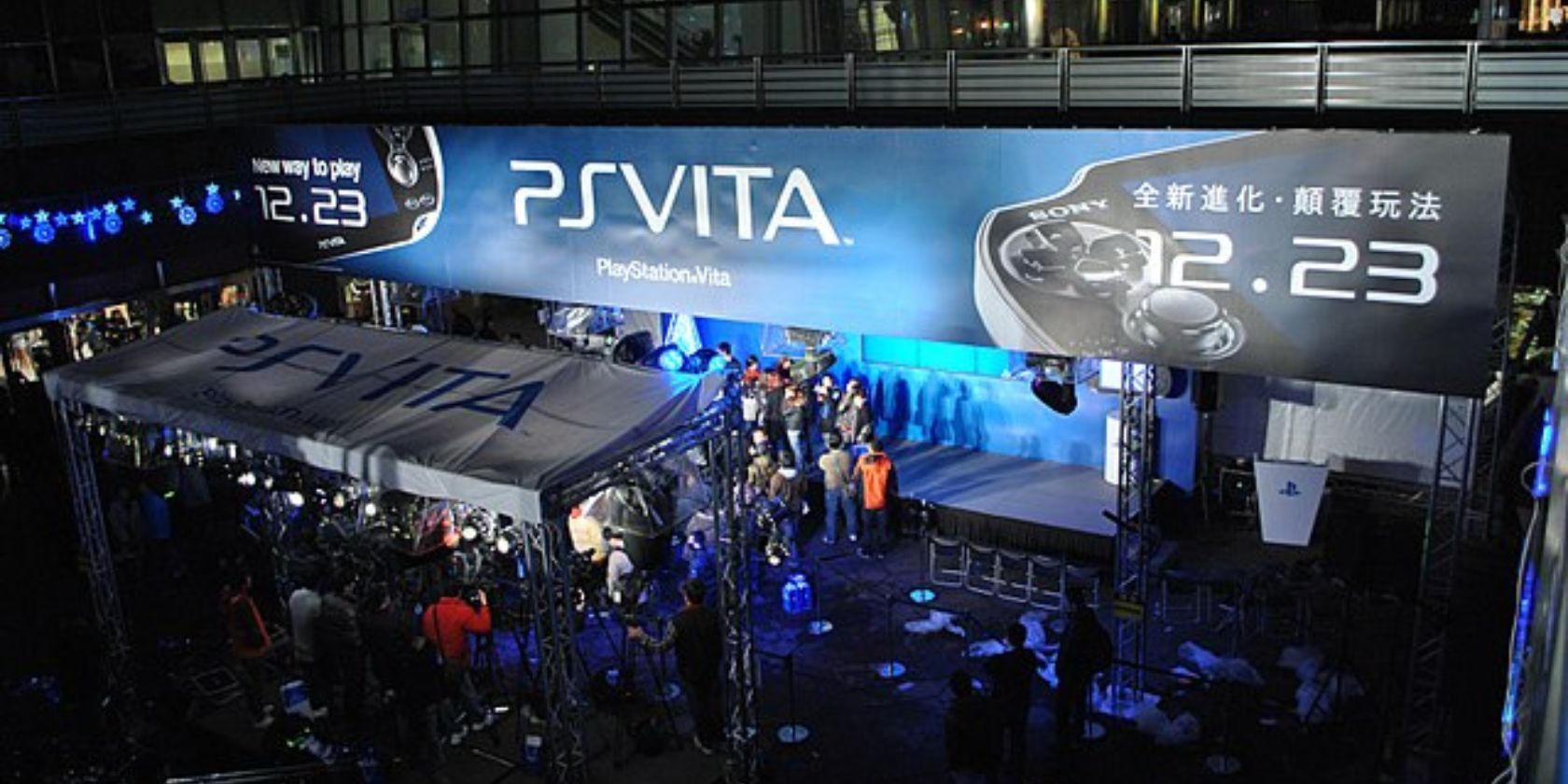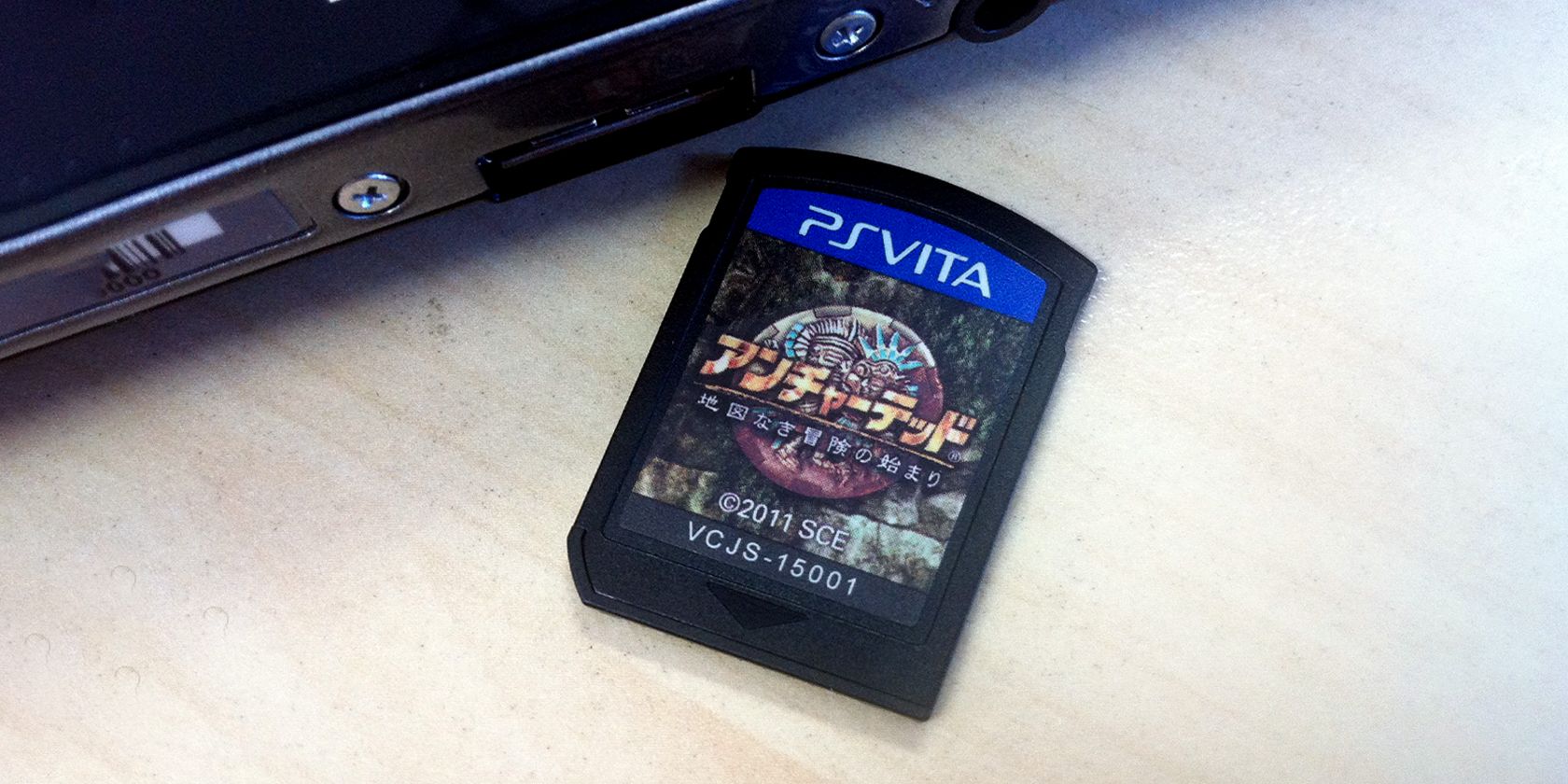The PS Vita promised the ability to play big-budget AAA titles on the go with graphics and performance that matches the PS3. It's a full home console experience in a package that fits in the palm of your hand. Sounds great, right?
But something went wrong with the PS Vita. Instead of becoming the world's best handheld console, it became Sony's biggest flop.
So, where did the PS Vita go wrong? Was it poor advertising? Broken promises? Or was it something else that sent the PS Vita into a downward spiral?
What Happened to the PS Vita?
If you were eagerly awaiting the release of the successor to the hugely popular PlayStation Portable, you were not the only one. According to VGChartz, the PSP sold 80.79M units worldwide, so expectations were high for the PS Vita when it launched on February 15, 2012.
Unfortunately, the PS Vita only sold around 15.82M units when Sony discontinued it in 2019.
This was a huge drop in figures and constituted a massive flop for Sony. However, there wasn't just one thing that went wrong with the PS Vita; it was a series of unfortunate events that set up the eventual failure of Sony's last portable system.
So, what really happened?
1. The Rise of Mobile Gaming
If you asked Sony why the PS Vita's sales suffered during its lifespan, they would probably say it was due to the rise of the mobile gaming market. In fact, Sony cited this as the reason why they would not be pursuing a successor for the system during an interview at EGX 2015.
Shuhai Yoshida spoke on behalf of PlayStation, stating that the "climate was not healthy" for portable gaming "due to the dominance of mobile gaming." You can watch the whole interview here:
Sony released the PS Vita at a time when mobile gaming was becoming increasingly popular. Phones were quickly becoming more powerful, allowing developers to create games that go beyond Snake and Pong.
Furthermore, global smartphone ownership was growing in leaps and bounds, turning it into one of the biggest markets for portable gaming. So why would you need to buy a $250 piece of hardware to play games on the go?
2. The Nintendo 3DS
While mobile gaming flourished around the time the PS Vita hit the market, so was the Nintendo 3DS. The Nintendo 3DS fully embraced the handheld console genre, releasing games such as Pokémon, Animal Crossing, and Mario Kart.
These were perfect games to sell on a handheld console due to their easy pick-up-and-play structure. It was so simple to pick up your Nintendo 3DS and shake some trees or talk to some villagers during your train ride to work.
The design of the Nintendo 3DS also lent itself well to handheld gaming. Not done with your Pokémon battle by the time the lunch bell rang? Just flip down the lid to pause the game and pick it back up later. This convenience didn't translate as well to the PS Vita.
The Nintendo 3DS was only a year old when the PS Vita was released, but that was enough time to sell to a huge market who didn't see the need for two portable gaming consoles in their collection.
The Nintendo DS line dominated the portable gaming market for years and still has a strong following to this day. If you would like to dabble in the world of the Nintendo DS but don't know where to start, check out the most popular Nintendo DS games of all time.
3. Poor Advertising
Sony advertised the PS Vita as a premium piece of hardware capable of providing a portable home console experience. This was one of the many things that contributed to its failure.
The issue wasn't that the PS Vita didn't receive enough advertising—it was that it was being advertised as something that it simply wasn't. The PS Vita was masquerading as a home console, but really, it was a handheld console, and Sony should have advertised it as such.
The Nintendo 3DS's pick-up-and-play design was perfect for portable gaming because you're usually busy when you're on the go. On the other hand, the PS Vita was advertised to play massive RPGs or action games like Borderlands and Uncharted.
These games require a lot of attention and time to reach save points and are nowhere near as easy to pick up and play for short intervals throughout the day. Most people interested in playing these big-budget AAA titles would instead do so in front of the big screen, where they can offer their undivided attention.
4. A Lackluster Game Library
Sony also advertised the PS Vita as a portable console experience where you could play all the latest AAA titles. But where were they? The PS Vita had an extremely limited library of AAA games supported on the system.
PS Vita got off to a great start with games like Uncharted Golden Abyss that played well and looked incredible on the portable console. But Sony did not keep this momentum, and eventually, the big-budget AAA titles that gamers expected gave way to half-baked spin-off titles instead.
But PlayStation had such a massive library of loved titles to turn to… right? Wrong. The PS Vita had minimal backward compatibility. Even when Sony discontinued the console in 2019, no physical Spyro or Crash Bandicoot games were available on the system, two of PlayStation's most beloved franchises.
5. Lack of Third-Party Support
If Sony wasn't releasing many games on the PS Vita, why would anyone else invest their time and money in doing so? Since the PS Vita was such a beefy handheld console with high-quality specs, making games for the system was difficult, time-consuming, and expensive.
But the PS Vita wasn't selling well. And since it was so expensive and difficult to make games for, many third-party developers just didn't.
Why spend a lot of time, effort, and money developing a game for a console that hasn't sold well when they could instead make an easier and cheaper game for the Nintendo 3DS, which has the opportunity to reach a far larger market?
6. The PS4 Remote Play Scenario
Since Sony didn't get the sales numbers it expected from the PS Vita, and it didn't have the game library many expected, the company tried a new tactic. Rather than advertising it as a portable home console experience, they turned the PS Vita into more of a companion to the PS3 and PS4.
Sony introduced a feature called Remote Play, with which you can access your PlayStation on a portable device. Remote Play worked well with the PS Vita. But since it was also available on mobile devices, it wasn't enough to breathe any more life into the console.
Remote Play didn't keep the PS Vita afloat, but it is a great feature also available for the PS5. Check out our guide on setting up and using Remote Play on your PS5 if you want to learn more.
7. It Was Very Expensive
The PS Vita was a premium system with a premium price tag. The PS Vita was priced at $250, significantly more expensive than its competing portable console, the Nintendo 3DS.
Paying a high price tag for a high-quality product is understandable, but the PS Vita costs almost as much as home consoles such as the Xbox 360 or the PS3. Though the PS Vita's price was not unreasonable when compared to its specs, many gamers opted to purchase a home console instead.
8. It Required Expensive Memory Cards
Memory cards were an inseparable part of PlayStations history for many years, and the PS Vita was no different. The PS Vita utilized a name-brand-specific memory card and was incompatible with other SDHC cards available on the market.
Sony's memory card was priced at around $100 for 32GB. This was far more expensive than other SDHC memory cards on the market then, selling for about $20 for 32GB. The high price of the memory card and the console itself made the PS Vita far more costly than many home console systems at the time.
9. Sony Gave Up on the PS Vita
At the end of the day, the final nail in the PS Vita's coffin was that Sony gave up on it. The PlayStation 4 flew off shelves after its release in November 2013, exceeding the PS Vita's lifetime sales numbers in its first year.
This was enough to spell the demise of the PS Vita. Sony saw how much better the PS4 was performing and began pulling resources from the all-but-forgotten portable console to pour into the PS4 instead.
The End of the Line for the PS Vita
With the right advertising, enough support, and engaging AAA titles released on the system, the PS Vita could have found its place in the market. Who knows? If everything worked out for the PS Vita, it could have even been sitting in the same throne the Nintendo Switch finds itself in now.




